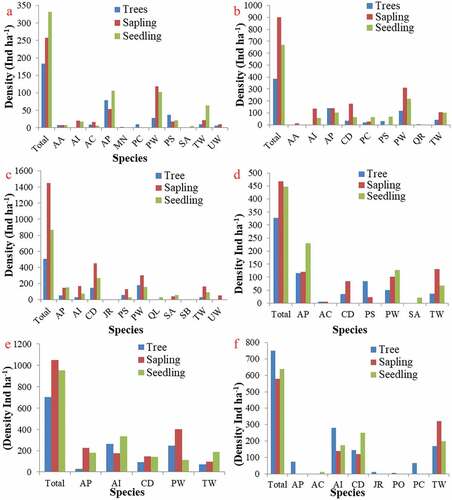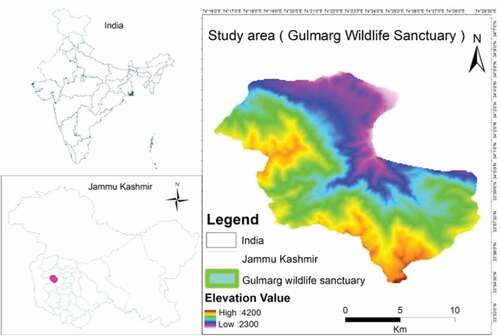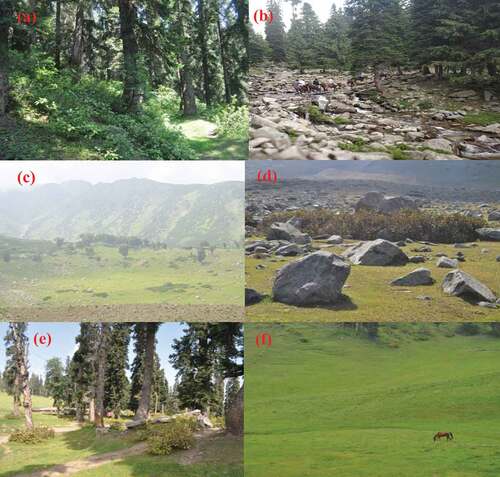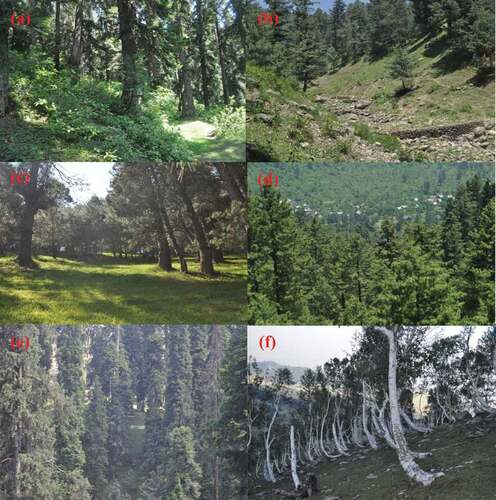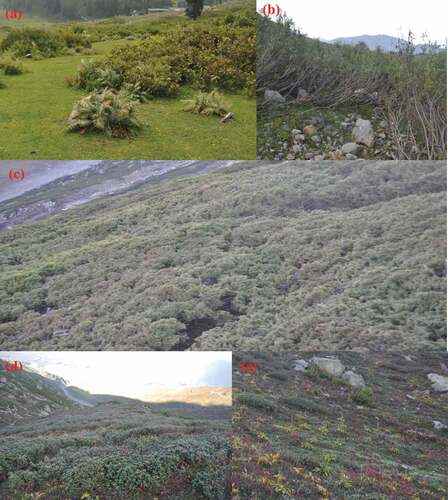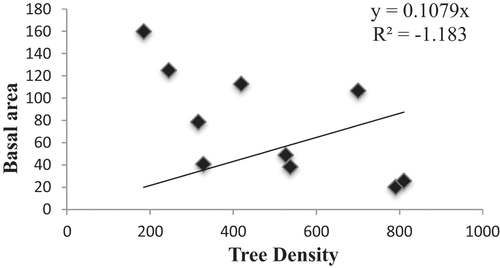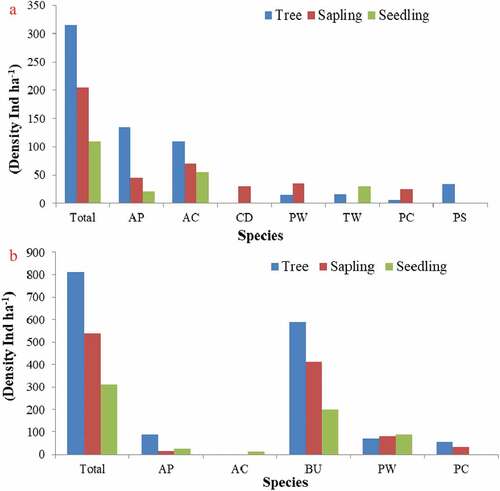Figures & data
Table 1. Taxonomic description of floristic diversity of GWLS, Kashmir Himalaya.
Table 2. Community types, distribution, and major associates in GWLS, Kashmir Himalaya.
Table 3. Community wise species diversity (Hʹ) of trees, saplings, seedlings, shrubs and herbs in GWLS, Kashmir Himalaya.
Table 4. Community wise concentration of dominance (Cd) of trees, saplings, seedlings, shrubs and herbs in GWLS, Kashmir Himalaya.
Figure 6. Forest communities having highest regeneration of the dominant plant species (A) Pinus wallichiana community; (B) Abies pindrow-Picea smithiana mixed community.
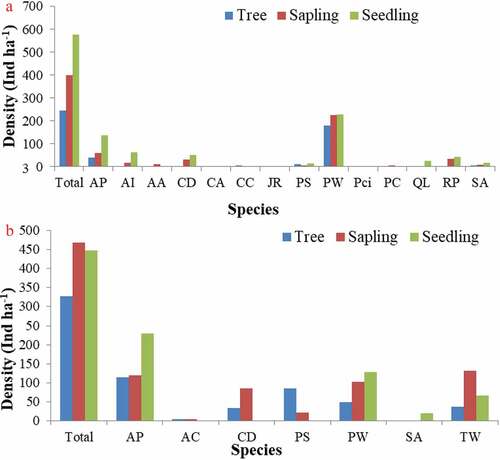
Figure 7. Forest communities having sufficient regeneration of dominant species but highest regeneration in co-dominant plant species(a) Abies pindrow community; (B) Abies pindrow-Pinus wallichiana mixed community (C) Pinus wallichiana-Cedrus deodara mixed community (D) Aesculus indica-Pinus wallichiana mixed community (E) Aesculus indica-Taxus wallichiana mixed community (F) Taxus wallichiana-Prunus cornuta-Aesculus indica mixed community.
